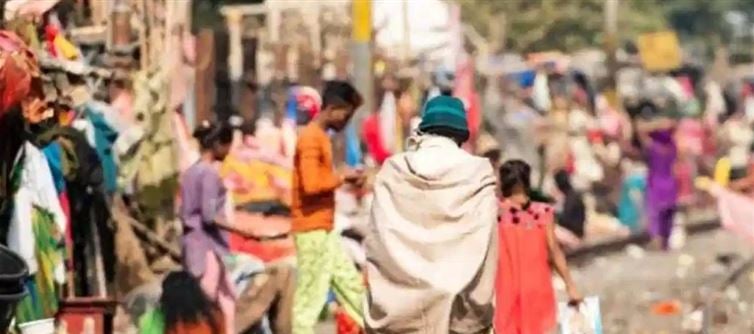
"Poverty has drastically decreased in india over the last ten years.
In its 'Poverty & Equity Brief' on india, the World bank stated that 171 million people were lifted above the threshold of extreme poverty, defined as living on less than USD 2.15 per day, which decreased from 16.2 percent in 2011–12 to 2.3 percent in 2022–23.
The rural-urban divide decreased from 7.7 to 1.7 percentage points, a 16 percent annual decline, and extreme poverty in rural areas decreased from 18.4% to 2.8% and in urban areas from 10.7% to 1.1%.
India also moved into the lower-middle income range, according to the brief. 378 million people were lifted out of poverty when poverty decreased from 61.8% to 28.1% using the USD 3.65 per day LMIC poverty standard.
With a 7% yearly decline, rural poverty decreased from 69 percent to 32.5% and urban poverty decreased from 43.5% to 17.2%, bringing the rural-urban gap down from 25 to 15 percentage points.
Two-thirds of the nation's drop in extreme poverty by 2022–2023 was attributed to India's five most populous states: Uttar Pradesh, Maharashtra, Bihar, West Bengal, and Madhya Pradesh. In 2011–12, these states accounted for 65% of the nation's severe poor, the report claimed.
The brief added that non-monetary poverty, as determined by the multidimensional poverty index (MPI), decreased from 53.8% in 2005–06 to 16.4% in 2019–21. "However, these states still accounted for 54% of India's extremely poor (2022–23) and 51% of the multidimensionally poor (2019–21)."
According to the short, since 2021–2022, employment growth has surpassed that of the working-age population. Urban unemployment dropped to 6.6% in Q1 FY24/25, the lowest level since 2017–18, and employment rates are increasing, particularly for women.
While rural female employment in agriculture has increased, recent data shows that male workers are moving from rural to urban areas for the first time since 2018–19.
The brief emphasized the ongoing difficulties, stating that youth unemployment is 13.3% and rises to 29% among graduates of postsecondary education. The majority of agricultural work is still informal, with only 23% of non-farm paid jobs being official.
Self-employment is on the rise, particularly among women and workers in rural areas. Despite the 31% female employment rate, there are still 234 million more males in paid jobs than women.
For more than 100 developing nations, the World Bank's Poverty and Equity Briefs (PEBs) illustrate trends in poverty, inequality, and shared prosperity.
The briefs, which are published twice a year for the World bank Group and international Monetary Fund's Spring and Annual Meetings, assist readers in quickly understanding the background of poverty and inequality in a nation and working to maintain poverty reduction at the top of the global agenda.




 click and follow Indiaherald WhatsApp channel
click and follow Indiaherald WhatsApp channel